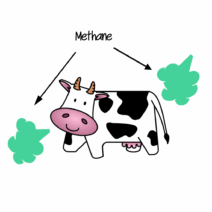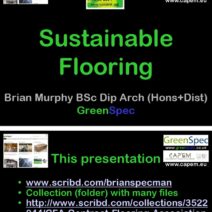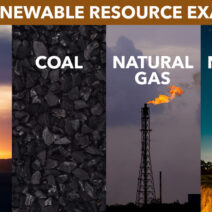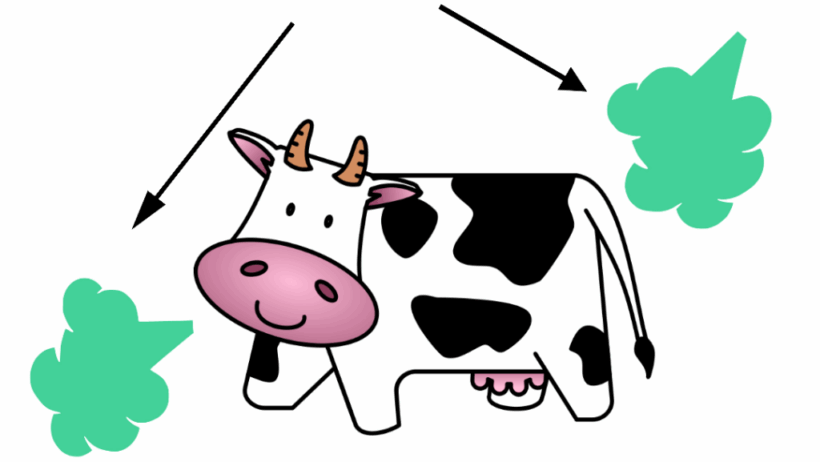When one contemplates the components of global warming, images of smoky factories or sprawling highways may come to mind. Yet, could the tranquillity of a pasture hide a significant contributor to climate change? The playful question lingers: Are cows the unwitting culprits in our quest for a cooler planet? The answer lies in the enigmatic world of methane—a potent greenhouse gas that emanates from the digestive processes of ruminants like cows.
Cows are ruminants, a classification that entails a complex digestive system made up of four compartments: the rumen, reticulum, omasum, and abomasum. This unique anatomical structure enables them to efficiently process fibrous plant material, predominantly grass. However, the flip side to this evolutionary advantage is that the digestion of such biomass produces methane as a byproduct. This gas is expelled primarily through belching, but also through flatulence, hence the colloquial references to “cow farts” making headlines in environmental discussions.
Methane, a greenhouse gas 28 times more effective than carbon dioxide at trapping heat in the atmosphere over a 100-year period, has been identified as a significant factor in accelerating climate change. Agricultural practices, particularly livestock production, are responsible for a large portion of anthropogenic methane emissions. In fact, the Food and Agriculture Organization (FAO) estimates that cattle are responsible for approximately 65% of global methane emissions attributed to human activity. This startling statistic underscores the urgency of addressing the methane mystery associated with these seemingly innocuous creatures.
The challenge extends beyond merely acknowledging the emissions generated by bovines. It prompts a deeper inquiry: How can we mitigate these emissions while still ensuring the livelihood of millions of farmers worldwide? Various strategies have emerged in response to this multifaceted predicament, and they encompass innovative agricultural practices, dietary adjustments, and technological advancements.
One promising approach lies in modifying the diet of cattle. Research has demonstrated that altering feed composition can substantially reduce methane production. For instance, incorporating seaweed into the diet has shown extraordinary results. Certain types of seaweed possess natural compounds that inhibit methane-generating microbes in the rumen, resulting in a considerable decrease in emissions. Preliminary studies have demonstrated reductions of up to 80% in methane emissions from cattle fed a diet containing specific seaweeds. However, the widespread adoption of such practices necessitates careful consideration of cost, availability, and farmer education.
Moreover, agroecological practices, which promote sustainable farming methods, can mitigate overall methane emissions. Implementing rotational grazing, for example, not only helps sequester carbon in soils but also promotes healthier pasture ecosystems that can better support livestock. By allowing pastures to rest and regenerate, these methods improve forage quality, ultimately reducing the methane output per animal. This practice paints a glimmer of hope, suggesting that sustainability and productivity are not mutually exclusive but can coexist harmoniously.
In addition to dietary modifications, there is also a burgeoning field focused on biological and technological innovations. Researchers are exploring the potential of microbial additives that can alter rumen fermentation processes, leading to lower methane emissions. These additives can include specific strains of bacteria that outcompete methane-producing microbes or enzymes that facilitate more efficient digestion. While still in the experimental stages, these biotechnological advancements represent a frontier ripe for exploration.
Addressing methane emissions from cattle also involves optimizing herd management practices. Understanding the relationship between animal health, milk production, and methane emissions presents an intriguing avenue. Healthier cows produce less methane per unit of product (milk or meat) compared to less healthy counterparts. Thus, investing in veterinary care, nutrition, and overall herd well-being not only supports animal welfare but serves as a dual-purpose solution to reducing methane emissions.
However, the path toward overcoming the methane challenge is fraught with barriers. Societal attitudes toward meat consumption, entrenched dietary habits, and economic implications for farmers present formidable obstacles. The question arises: How do we shift perspectives to embrace necessary dietary changes? Initiatives to engage consumers in understanding the environmental impact of their food choices play a pivotal role in this transformation. Education campaigns that emphasize the importance of choosing sustainable options can empower individuals to make informed choices that align with a climate-conscious lifestyle.
Ultimately, the cow and its connection to global warming elucidate a broader narrative about human responsibility and environmental stewardship. Cows may be a significant source of methane, but they also represent a critical link in our agricultural systems. Finding balance in this equation requires a comprehensive approach that encompasses sustainable farming, technological innovation, and a collective commitment to resolving the climate crisis.
The perpetual dance between environmental sustainability and agricultural economics demands creativity and collaboration among stakeholders at every level—from farmers to consumers. As we unravel the methane mystery, one truth becomes strikingly clear: it is not merely about sequestering the gas but also about redefining our relationship with livestock and the land they graze on. The future of our planet may well depend on how we answer the playful question of cow farts and their role in climate change. Thus, as we seek solutions, let us march forward with purpose, armed with knowledge and a collective vision for sustainability.






